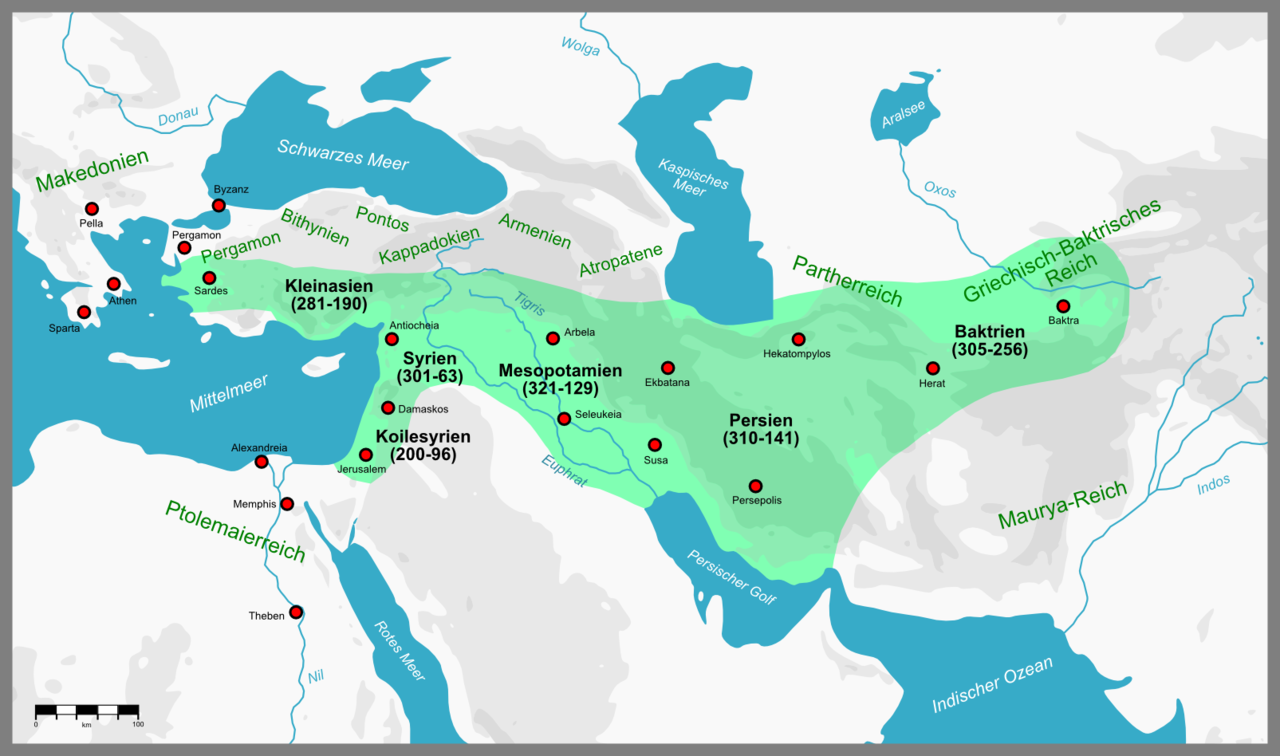Seleucid Empire
The Seleucid Empire was a Hellenistic monarchy founded by Seleucus I and his descendants following the fragmentation of Alexander the Great's empire. After the partitioning of Alexander's empire among the Diadochi, Seleucus I was granted the satrapy of Babylonia, and through a series of wars, he expanded his territory to include much of Alexander's Middle Eastern domains. The Seleucid state was referred to by contemporaries both as an empire and as a kingdom.
 Map of the Seleucid Empire
Map of the Seleucid Empire
The core of the empire was the Middle East, and at its height, it encompassed parts of Asia Minor, Syria, Phoenicia, Palestine, Mesopotamia, Iran, parts of Central Asia, and what is now Pakistan. By the 1st century BCE, the territory of the Seleucid Empire had shrunk to cover what is now Syria and Lebanon.
The Seleucid Empire was a major center of Hellenism, serving as a key link between Greek and Persian cultural traditions. As it began its expansion into Greece, the empire clashed with the armies of the Roman Republic, which dealt it a series of defeats. Consequently, by the mid-2nd century BCE, the eastern part of the empire had been taken over by the Parthians under Mithridates I. The Seleucids continued to rule in Syria-Phoenicia until the Armenian king Tigranes II conquered the region in 83 BCE, effectively ending the Seleucid Empire. The reigning queen, Cleopatra Selene I of the Seleucid dynasty, was captured and executed in 69 BCE by order of the Armenian king of kings. In 64 BCE, the former western territories of the Seleucid Empire were annexed as the Roman province of Syria.


